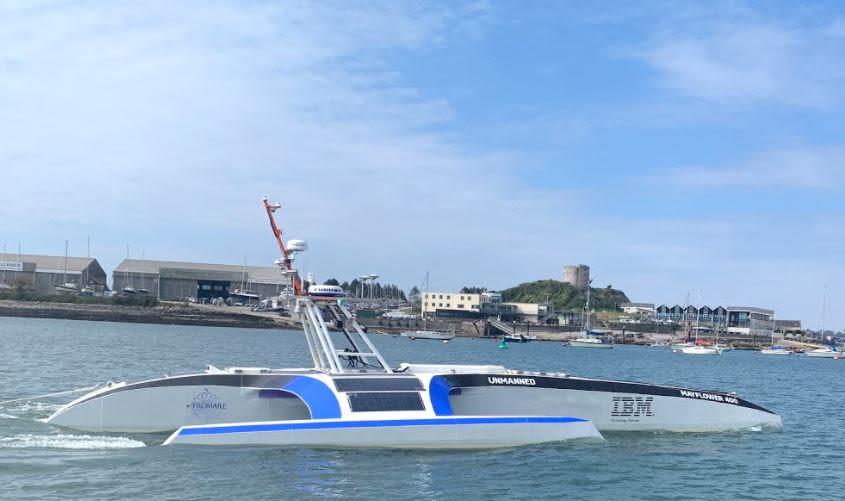No captain. No crew. No human contact.
Within the next few weeks, the world’s most technologically advanced ship will slip its moorings in Plymouth and begin a pioneering 3,000-mile journey across the Atlantic.
And it will do so without any human intervention.
The Mayflower 400 is named after the original triple-masted vessel that took the Pilgrims to the New World four centuries ago.
But although it will follow the same route to New England, the 21st century ship is nothing like its slow, heavy, wooden forbearer.
It’s a sleek solar-powered trimaran with an AI captain – a computer that’s learned to spot hazards and navigate around them.
It’s not just a proof of concept for a future of autonomous ships, large and small, that could ply the world’s oceans without a crew.
It’s also a floating laboratory, packed with robotic instruments that will sample the water, listen to whale songs, and monitor the impact of human activity on ocean health.
With no humans on board, there’s no need for headroom. Nor are there bunks, toilets or a kitchen. This is pure machine, a robotic ship designed to do science in the remotest parts of the world’s ocean.
It’s powered by solar panels, supplemented with a frugal diesel-electric engine. In theory, it could spend long periods at sea.
The Mayflower 400 is currently in sea trials in Plymouth Sound, with a team from IBM and ProMare tweaking the software to prepare the ship for its maiden solo voyage.






